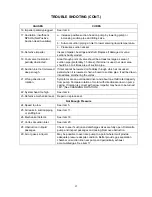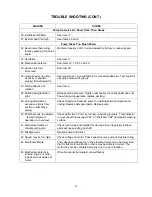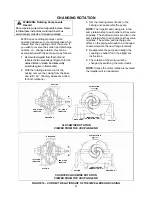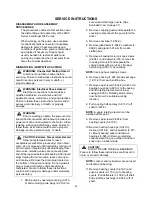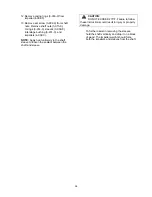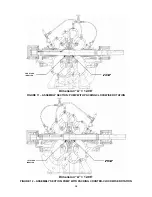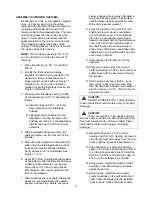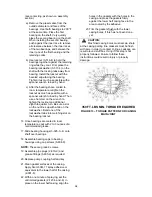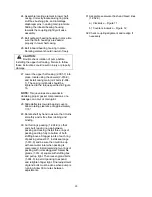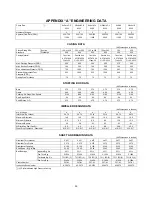
35
APPENDIX “C” FIELD TEST REPORT
USEFUL FORMULAS
1) Head (ft.) =
S.G.
2.31
x
(psig.)
Pressure
S.G. = specific gravity;
S.G. of water = 1.0 at 70°F
2) TDH (ft.) = Total Dynamic Head (ft.) = (Disch. pressure gauge reading - Suct. pressure gauge reading) +
(Discharge velocity head - Suction velocity head) +
(Elevation correction to disch. gauge - Elevation correction to suct. gauge)
3) PUMP INPUT HP (BHP) - calculated:
Single Phase Motor
Three Phase Motor
BHP
=
746
p.f.
x
n
x
x Volts
Amps
m
BHP
=
746
p.f.
x
n
x
1.732
x
x Volts
Amps
Avg.
m
where
n
m
= motor efficiency, p.f. = motor power factor, Avg. Amps =
3
3
leg
2
leg
1
leg
+
+
4) Pump Efficiency (n
p
):
n
p
=
BHP
x
3960
TDH
x
GPM
5) Affinity Laws for correcting GPM, TDH, and BHP for speed (RPM):
2
1
GPM
GPM
=
2
1
RPM
RPM
or
GPM
1
= GPM
2
x
2
1
RPM
RPM
2
1
TDH
TDH
=
(
2
1
RPM
RPM
)
2
or TDH
1
= TDH
2
x
(
2
1
RPM
RPM
)
2
2
1
BHP
BHP
=
(
2
1
RPM
RPM
)
3
or BHP
1
= BHP
2
x
(
2
1
RPM
RPM
)
3
6) NPSHA
DETERMINATION:
NPSHA = Net Positive Suction Head Available
NPSHA = (Atmospheric pressure - Vapor pressure of Total suction head)
Total Suction Head = (Suction pressure gauge r Suction velocity head + Elevation correction to
suction
gauge)
NOTE:
NPSHA must always be greater than NPSHR (NPSHA
≥
NPSHR) for the pump to operate without concern
of cavitation.
NPSHR refers to Net Positive Suction Head Required by pump. This is a published value obtained from
the Pump Manufacturer’s curve.
2 of 2

